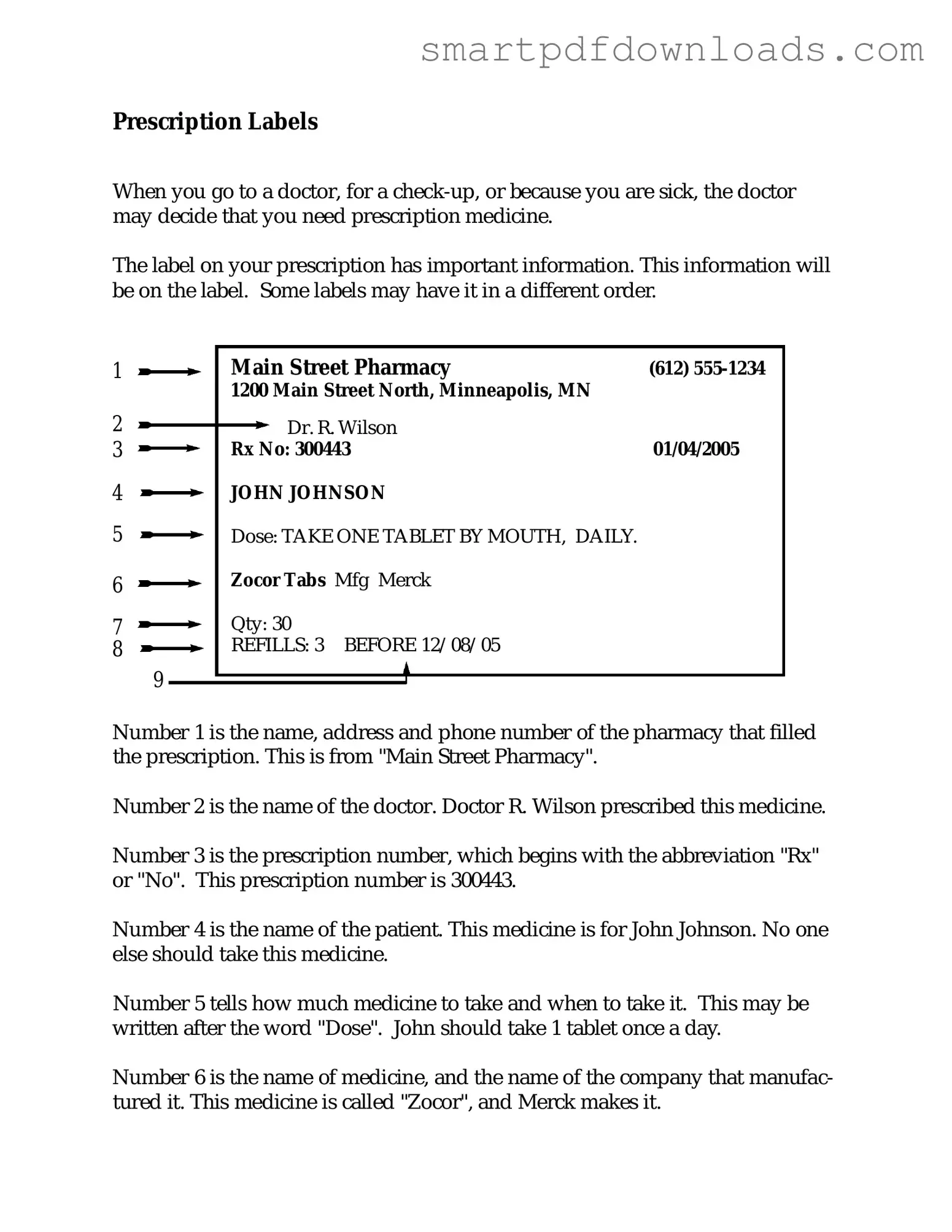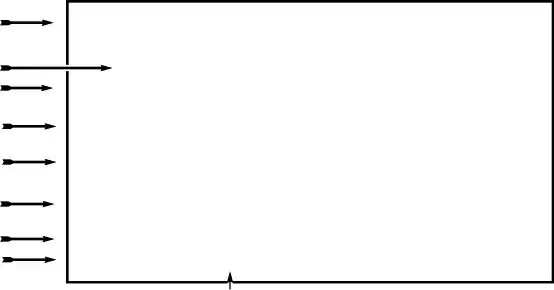Prescription Labels
When you go to a doctor, for a check-up, or because you are sick, the doctor may decide that you need prescription medicine.
The label on your prescription has important information. This information will be on the label. Some labels may have it in a different order.
1 |
|
|
Main Street Pharmacy |
(612) 555-1234 |
|
|
|
1200 Main Street North, Minneapolis, MN |
|
2 |
|
|
Dr. R. Wilson |
|
3 |
|
|
Rx No: 300443 |
01/04/2005 |
4 |
|
|
JOHN JOHNSON |
|
5 |
|
|
Dose: TAKE ONE TABLET BY MOUTH, DAILY. |
|
6 |
|
|
Zocor Tabs Mfg Merck |
|
7 |
|
|
Qty: 30 |
|
8 |
|
|
REFILLS: 3 BEFORE 12/08/05 |
|
|
9 |
|
|
|
|
|
|
|
|
|
|
|
|
|
|
Number 1 is the name, address and phone number of the pharmacy that filled the prescription. This is from "Main Street Pharmacy".
Number 2 is the name of the doctor. Doctor R. Wilson prescribed this medicine.
Number 3 is the prescription number, which begins with the abbreviation "Rx" or "No". This prescription number is 300443.
Number 4 is the name of the patient. This medicine is for John Johnson. No one else should take this medicine.
Number 5 tells how much medicine to take and when to take it. This may be written after the word "Dose". John should take 1 tablet once a day.
Number 6 is the name of medicine, and the name of the company that manufac- tured it. This medicine is called "Zocor", and Merck makes it.
Number 7 is the number of tablets. This may be written after the abbreviation "Qty" or the word "Quantity". This prescription is for 30 pills.
Number 8 is the number of refills available. When no refills are available the number will be "0".
Number 9 is the expiration date of the prescription. This may be written after "refill before" or the abbreviation "Exp". This is the last date the pharmacy can refill the prescription.
For more information about OTC medicine labels see OTC Labels. For more information about warning labels see Warning Labels.
For more information about the side effects of medicine see Side Effects.
The LaRue Medical Literacy Exercises were created by Charles LaRue through a grant from the Minnesota Department of Education under the supervision of the Minnesota Literacy Council.
©2005 MN Dept of Education

